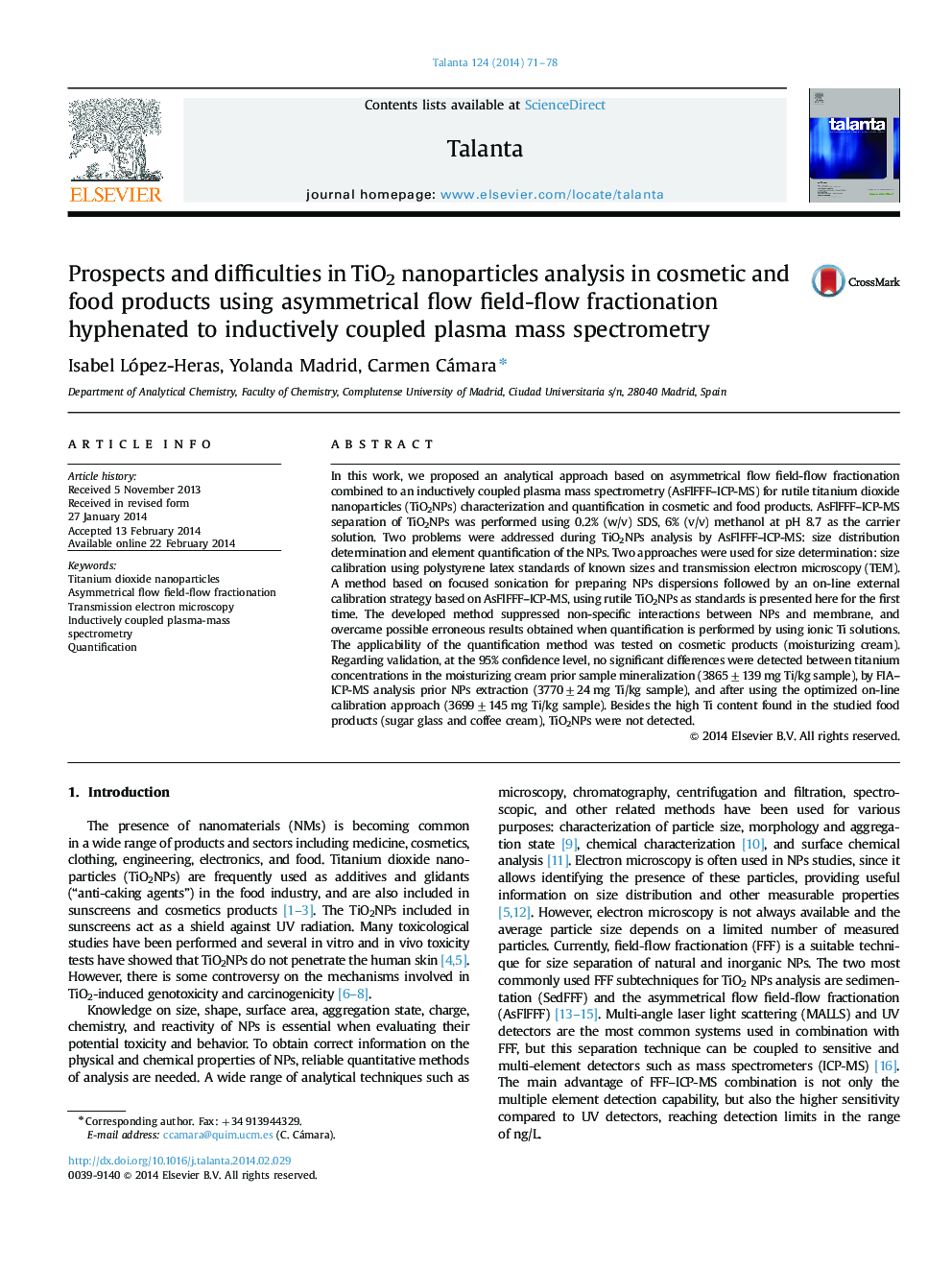| Article ID | Journal | Published Year | Pages | File Type |
|---|---|---|---|---|
| 1242310 | Talanta | 2014 | 8 Pages |
•Optimization of recovery problems associated with AsFlFFF analysis.•A promising approach for quantitative determination of TiO2 nanoparticles.•Ultrasound energy has a direct effect on quantitative analysis.•Comparison of a size calibration approach using standards of known size and TEM.
In this work, we proposed an analytical approach based on asymmetrical flow field-flow fractionation combined to an inductively coupled plasma mass spectrometry (AsFlFFF–ICP-MS) for rutile titanium dioxide nanoparticles (TiO2NPs) characterization and quantification in cosmetic and food products. AsFlFFF–ICP-MS separation of TiO2NPs was performed using 0.2% (w/v) SDS, 6% (v/v) methanol at pH 8.7 as the carrier solution. Two problems were addressed during TiO2NPs analysis by AsFlFFF–ICP-MS: size distribution determination and element quantification of the NPs. Two approaches were used for size determination: size calibration using polystyrene latex standards of known sizes and transmission electron microscopy (TEM). A method based on focused sonication for preparing NPs dispersions followed by an on-line external calibration strategy based on AsFlFFF–ICP-MS, using rutile TiO2NPs as standards is presented here for the first time. The developed method suppressed non-specific interactions between NPs and membrane, and overcame possible erroneous results obtained when quantification is performed by using ionic Ti solutions. The applicability of the quantification method was tested on cosmetic products (moisturizing cream). Regarding validation, at the 95% confidence level, no significant differences were detected between titanium concentrations in the moisturizing cream prior sample mineralization (3865±139 mg Ti/kg sample), by FIA–ICP-MS analysis prior NPs extraction (3770±24 mg Ti/kg sample), and after using the optimized on-line calibration approach (3699±145 mg Ti/kg sample). Besides the high Ti content found in the studied food products (sugar glass and coffee cream), TiO2NPs were not detected.
Graphical abstractFigure optionsDownload full-size imageDownload as PowerPoint slide
